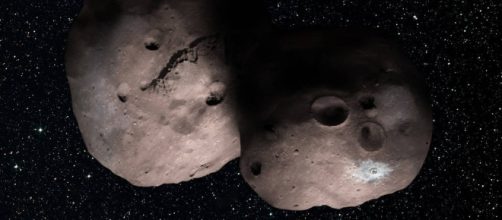A couple of years ago, the New Horizons space probe flew past Pluto and changed how we understand what was once considered the ninth planet from the sun forever. Since the probe was still in good shape, NASA scientists decided that it could fly by an object deeper inside the Kuiper Belt -- that area of Rock And Ice that surrounds the solar system. They hit upon 2014 Mu69, an object about a billion miles further out from the sun than Pluto. New Horizons will pass by MU69 on New Year’s Day 2019. In the meantime, studies from the ground suggest that MU69 is far more interesting than a run-of-the-mill sphere of rock and ice.
Studying the occultation of MU69
While waiting for the arrival of New Horizons to its new target, NASA reports that scientists have been scattered across the globe to aim telescopes at MU69 to see what it looks like when it passes between Earth and the background stars, a process called an occultation. In this way, they hope to discover more about the object’s size and shape.
In order to conduct the observation campaign, the New Horizons scientists used the Hubble Space Telescope and the European Space Agency Gaia probe to determine the best location and times to perform the occultation observation. Then they used the Stratospheric Observatory for Infrared Astronomy (SOFIA), mounted inside a 747 jet, to perform the July 10 observation, for example.
During other observations, the scientists used a number of ground-based telescopes. They performed three observations, on June 2, July 10, and July 17. During the most recent observation that took place in Southern Argentina, the scientists found something fascinating about MU69
MU69 may not be just one object
According to NASA, the New Horizons scientists found that MU69 may not be a single object, but two that are either close together or even touching one another. The object could also be long and skinny. If MU69 is two objects, each of them is likely to be 9-12 miles along. If it is long and thin, MU69 is about 19 miles long. In either case, the science that is going to be garnered once New Horizons arrives in about a year and five months is likely to be spectacular.
What happens next?
The New Horizons team will perform more observations during the run up to the Jan 1, 2019 encounter. When the space probe passes by 2014 MU69, the event will constitute the farthest away from Earth that any machine made by humans has ever encountered a celestial object and returned images and data from said object.


